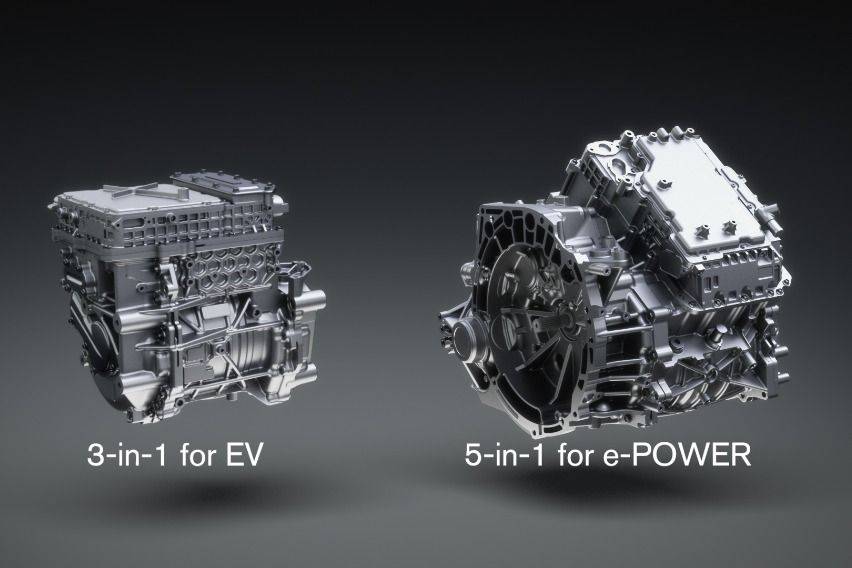Nissan starts new approach in EV powertrain development

Nissan revealed its latest approach to electrified powertrain development.
KEY TAKEAWAYS
What is the main advantage of the X-in-1 approach?
With the aforementioned initiative, the core electric vehicle (EV) and e-Power engine parts will be shared and modularized that will result in lower development and manufacturing costs.What are the two engines developed in the X-in-1 approach?
The two powertrains created in the X-in-1 approach are the three-in-one and five-in-one variants.Dubbed as “X-in-1”, the Japanese automotive marque said that the core electric vehicle (EV) and e-Power engine parts will be shared and modularized that will result in lower development and manufacturing costs by 2026.
Per Nissan, the cutdown in expenses will be 30 percent compared to 2019.
With the X-in-1 approach, Nissan is eyeing to further boost the competitiveness of its EV and e-Power vehicles. Nissan said that a three-in-one prototype — which modularizes the motor, inverter, and reducer — has been created and is planned to use in EV models. Meanwhile, a five-in-one example (which additionally modularizes the generator and increaser) is planned to be utilized in e-Power offerings.

The company explained that the X-in-1 approach — which covers the three-in-one, five-in-one along with other possible variants — was created to allow EV and e-Power core components to be produced on the same line.
To recall, Nissan was the first automaker to mass-market an EV, with fully-electric Leaf back in 2010. Then in 2016, the company launched its e-POWER electrified powertrain, utilizing its EV technology, which provides the same driving pleasure as an EV as it is 100-percent motor drive.
The X-in-1 approach to electrified powertrain development provides the following benefits:
- Sharing and modularizing core components improves production efficiencies and reduces powertrain costs by approximately 30 percent compared to 2019. Nissan aims to achieve e-POWER price parity with internal combustion engine (ICE)-powered vehicles by around 2026
- Size and weight reduction of the unit improves vehicle driving performance and minimizes noise and vibration
- Adopt newly developed motor that reduces the use of heavy rare earth elements to one percent or less of magnet weight
- The sharing of core components and control technology provides the enjoyable driving experience unique to Nissan EV
“We make the most of our expertise and know-how from our more-than-a-decade long development and production of electrified technologies. Through our innovations in electrified powertrain development, we’ll continue to create new value for customers and deliver 100 percent motor-driven vehicles – EVs and e-POWER – as widely as possible,” Senior Vice President Toshihiro Hirai, who leads powertrain and EV engineering development, was quoted as saying.
Under the Nissan Ambition 2030, the company aims to increase its lineup with 27 new electrified models (including 19 EV models) by fiscal year 2030.
Photos from Nissan
Also read:
Nissan bares ‘Blue Switch’ initiative for PH
Euro-spec Nissan Qashqai to be equipped with updated e-Power drive system
Featured Articles
- Latest
- Popular
Recommended Articles For You
Featured Nissan Cars
- Latest
- Upcoming
- Popular
Nissan Car Articles From Zigwheels
- News
- Article Feature
- Road Test
